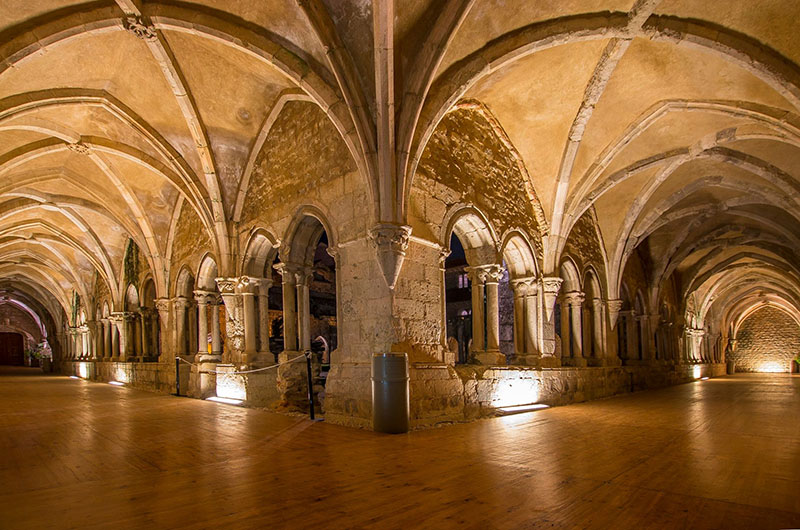ITS ORIGINS ARE VERY ANCIENT, PRESUMABLY FROM SEVERAL CENTURIES BEFORE THE BIRTH OF CHRIST. DISCOVER THE TOWN THAT WAS BORN AS SCALLABIS.

Santarém Cathedral @José Freitas
It was a commercial trading point and an important administrative center in the roman empire. It belonged for four centuries to the Moors and it was home to many dignitaries of the Moslem culture, such as the poet Ibn Sara and the historian Ibn Bassam. Conquered in 1147 by King Afonso Henriques, it staged several Royal Courts. Nobility moved here, as well as clerics and different religious orders that turn it into one of the most important towns in medieval Portugal, leaving behind an important architectonic legacy that can still be admired nowadays– in monasteries, hermitages, palaces and manor houses.
THE HERITAGE OF THE PAST
Maybe the best way to start a tour of Santarém would be high up. At the Sun Gates Garden (Jardim das Portas do Sol) one finds an impressive panoramic view over the entire city, looking over the Tejo and towards the splendorous and fertile Leziria flood plains. Aside from the town panoramic viewpoint, there is also a viewpoint over the town’s past at the Urbi Scallabis Interpretation Center, where one can have an initial contact with Santarém’s history.

Jardim das Portas do Sol

Campinos
You have to go to the historic center to understand the reason why Santarém has to be a required stop in any gothic trail in Portugal. In the mainly Romanesque São João do Alporão Church, where the valuable Art and Archeology Museum Hub is set, one finds a gothic remnant in the Apse. At the Nossa Senhora da Graça Church, inestimable monument for the Santarém people, the portal places us face to face with the flamboyant gothic style. In its interior is the sepulture of Pedro Álvares Cabral, the discoverer of Brazil. The connection of Santarém with the Discoveries is remembered next door at Brazil’s House (Casa do Brasil), housed in a building erected over another that had belonged to the navigator’s family and that the local council transformed into a memorial. And since we mentioned the Municipal Council, it should be cited that this public entity is lodged at the Eugénio Silva Palace, a beautiful example of late sixteen hundred manor house architecture. At the Sá da Bandeira Square are located two others of the town’s landmarks: the Nossa Senhora da Piedade Church and the particularly relevant Cathedral, classified as a Portuguese national monument.

São Francisco Convent
OTHER PLEASURES
And if so much touring made you hungry, you are in the right place. At Ribatejo’s capital, the plantations are fertile and the fish is fresh. Between the fried eels, the lamprey and the bread broth with shad, there’s plenty of fish options, although the meat from the cattle that is raised here is surely also very tasty, particularly if served along with some migas, Ribatejo style.












